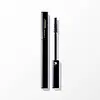What's inside
What's inside
 Key Ingredients
Key Ingredients

 Benefits
Benefits

 Concerns
Concerns

 Ingredients Side-by-side
Ingredients Side-by-side

Water
Skin ConditioningStyrene/Acrylates/Ammonium Methacrylate Copolymer
Butyrospermum Parkii Butter
Skin ConditioningPropylene Glycol
HumectantGlyceryl Stearate
EmollientDimethicone
EmollientPolybutene
PEG-100 Stearate
Behenyl Alcohol
EmollientSorbitol/Sebacic Acid Copolymer Behenate
Skin ConditioningDivinyldimethicone/Dimethicone Copolymer
Glyceryl Stearate Citrate
EmollientDisodium Ethylene Dicocamide PEG-15 Disulfate
CleansingPhenoxyethanol
PreservativeCaprylyl Glycol
EmollientGlyceryl Dibehenate
EmollientGlycerin
HumectantAmmonium Polyacryloyldimethyl Taurate
Emulsion StabilisingDimethicone/Vinyl Dimethicone Crosspolymer
Skin ConditioningSilica
AbrasiveButylene Glycol
HumectantPotassium Sorbate
PreservativeTribehenin
EmollientXanthan Gum
EmulsifyingDimethiconol
EmollientTocopheryl Acetate
AntioxidantSodium Laureth Sulfate
CleansingGlyceryl Behenate
EmollientBHT
AntioxidantEthylhexylglycerin
Skin ConditioningDisodium EDTA
C12-13 Pareth-23
CleansingC12-13 Pareth-3
EmulsifyingTetrasodium EDTA
Methicone
EmollientTocopherol
AntioxidantCitric Acid
BufferingCI 77491
Cosmetic ColorantCI 77492
Cosmetic ColorantCI 77499
Cosmetic ColorantCI 77007
Cosmetic ColorantCI 75470
Cosmetic ColorantCI 77891
Cosmetic ColorantCI 77288
Cosmetic ColorantCI 42090
Cosmetic ColorantCI 19140
Cosmetic ColorantCI 16035
Cosmetic ColorantMica
Cosmetic ColorantCI 77742
Cosmetic ColorantCI 77510
Cosmetic ColorantFish Oil
Skin ConditioningCeramide AP
Skin ConditioningWater, Styrene/Acrylates/Ammonium Methacrylate Copolymer, Butyrospermum Parkii Butter, Propylene Glycol, Glyceryl Stearate, Dimethicone, Polybutene, PEG-100 Stearate, Behenyl Alcohol, Sorbitol/Sebacic Acid Copolymer Behenate, Divinyldimethicone/Dimethicone Copolymer, Glyceryl Stearate Citrate, Disodium Ethylene Dicocamide PEG-15 Disulfate, Phenoxyethanol, Caprylyl Glycol, Glyceryl Dibehenate, Glycerin, Ammonium Polyacryloyldimethyl Taurate, Dimethicone/Vinyl Dimethicone Crosspolymer, Silica, Butylene Glycol, Potassium Sorbate, Tribehenin, Xanthan Gum, Dimethiconol, Tocopheryl Acetate, Sodium Laureth Sulfate, Glyceryl Behenate, BHT, Ethylhexylglycerin, Disodium EDTA, C12-13 Pareth-23, C12-13 Pareth-3, Tetrasodium EDTA, Methicone, Tocopherol, Citric Acid, CI 77491, CI 77492, CI 77499, CI 77007, CI 75470, CI 77891, CI 77288, CI 42090, CI 19140, CI 16035, Mica, CI 77742, CI 77510, Fish Oil, Ceramide AP
Isododecane
EmollientCera Alba
EmollientCopernicia Cerifera Cera
EmollientDisteardimonium Hectorite
StabilisingWater
Skin ConditioningCI 77499
Cosmetic ColorantAllyl Stearate/Va Copolymer
Oryza Sativa Cera
Skin ConditioningParaffin
PerfumingAlcohol Denat.
AntimicrobialPolyvinyl Laurate
Vp/Eicosene Copolymer
Propylene Carbonate
SolventTalc
AbrasiveSynthetic Beeswax
Emulsion StabilisingCandelilla Cera
EmollientPEG-30 Glyceryl Stearate
EmulsifyingPanthenol
Skin ConditioningEthylenediamine/Stearyl Dimer Dilinoleate Copolymer
Skin ConditioningBHT
AntioxidantPentaerythrityl Tetra-Di-T-Butyl Hydroxyhydrocinnamate
AntioxidantCI 77491
Cosmetic ColorantCI 77891
Cosmetic ColorantIsododecane, Cera Alba, Copernicia Cerifera Cera, Disteardimonium Hectorite, Water, CI 77499, Allyl Stearate/Va Copolymer, Oryza Sativa Cera, Paraffin, Alcohol Denat., Polyvinyl Laurate, Vp/Eicosene Copolymer, Propylene Carbonate, Talc, Synthetic Beeswax, Candelilla Cera, PEG-30 Glyceryl Stearate, Panthenol, Ethylenediamine/Stearyl Dimer Dilinoleate Copolymer, BHT, Pentaerythrityl Tetra-Di-T-Butyl Hydroxyhydrocinnamate, CI 77491, CI 77891
Ingredients Explained
These ingredients are found in both products.
Ingredients higher up in an ingredient list are typically present in a larger amount.
BHT is a synthetic antioxidant and preservative.
As an antioxidant, it helps your body fight off free-radicals. Free-radicals are molecules that may damage your skin cells.
As a preservative, it is used to stabilize products and prevent them from degrading. Specifically, BHT prevents degradation from oxidation.
The concerns related to BHT come from oral studies; this ingredient is currently allowed for use by both the FDA and EU.
However, it was recently restricted for use in the UK as of April 2024.
Learn more about BHTCi 77491 is also hydrated iron III oxide. It's sole purpose is to give a red/pink hue to products.
Iron III oxides are classified as inorganic chemicals for coloring.
Synthetically created Ci 77491 is considered safer than those naturally found. This is because the synthetically created version may contain less impurities. Iron oxides are generally non-toxic and non-allergenic.
Learn more about CI 77491Ci 77499 is also hydrated iron III oxide. It is created from mixing red and black iron oxides. This helps give shades of darkness to a product.
Iron III oxides are classified as inorganic chemicals for coloring.
Ci 77891 is a white pigment from Titanium dioxide. It is naturally found in minerals such as rutile and ilmenite.
It's main function is to add a white color to cosmetics. It can also be mixed with other colors to create different shades.
Ci 77891 is commonly found in sunscreens due to its ability to block UV rays.
Learn more about CI 77891Water. It's the most common cosmetic ingredient of all. You'll usually see it at the top of ingredient lists, meaning that it makes up the largest part of the product.
So why is it so popular? Water most often acts as a solvent - this means that it helps dissolve other ingredients into the formulation.
You'll also recognize water as that liquid we all need to stay alive. If you see this, drink a glass of water. Stay hydrated!
Learn more about Water